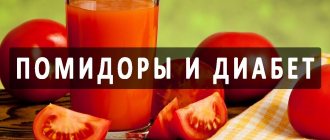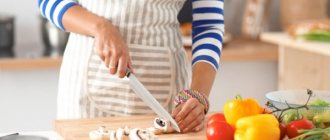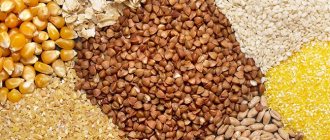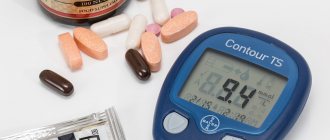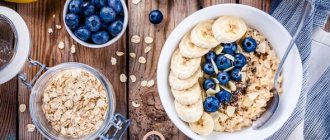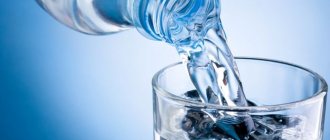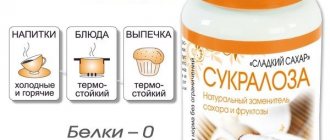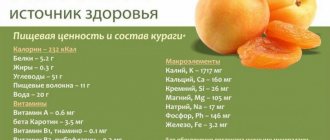What is allowed to eat?
The very first question a patient with diabetes asks the doctor: what to eat with this disease and what foods can be consumed daily? The best foods for this disease are vegetables, fruits, meat and dairy products. If you exclude the use of glucose, which is a source of instant energy, rapid depletion of the body's natural energy reserves (glycogen) and protein breakdown can occur. To avoid this, it is necessary that the diet contains protein foods in the required quantities, as well as vitamins and microelements.
Which products for type 2 diabetes (the table will be presented below) are allowed and which are prohibited?
Catering rules
Nutritionists have the following recommendations for organizing a healthy diet for patients with type 2 diabetes:
- When following therapeutic diets, fractional meals are indicated. Diabetic meals were no exception. It is better to divide the daily diet into five parts. Portions should be small.
- Nutritionists advise always starting your meal with a serving of fresh vegetable salad. This technique will help slow down the absorption of carbohydrates.
- Despite the low calorie content of the dishes, the total number of calories per day should be 2000-3000 kcal, subject to physical activity.
- It is necessary to monitor your weight, trying to reduce it if you are overweight.
- Be sure to eat slow carbohydrates. Their sources are beans, cereals and leafy vegetables.
- It is necessary to properly distribute the food load. The maximum amount of carbohydrate food should be eaten at breakfast. The last meal of the day will be the least caloric.
- You will have to give up alcoholic drinks. In fact, they are high in calories and whet your appetite.
In order to prevent complications of the disease, you can drink decoctions of some herbs: St. John's wort, chicory, flaxseed, nettle, blueberry, ginseng. Chicory is a great substitute for coffee. These plants do not lead to metabolic disorders, and you can drink them instead of tea. They perfectly tone the body and normalize the functioning of the nervous system.
Proper nutrition for diabetes should become not just a temporary diet, but a way of life. Only in this case can you count on effective fight against the disease. In addition to choosing the right foods, you should monitor portion sizes and total calorie content. Another important aspect of treatment is weight loss and physical activity. The combination of all elements gives the best result.
Type 2 diabetes mellitus imposes significant restrictions on the diet. In the case of this disease, health and well-being directly depend on proper nutrition. You should be aware of which foods are prohibited for consumption.
If you do not follow the rules of food consumption and eat unhealthy foods, the course of the disease can become significantly more complicated. It is better to create an individual diet program with your doctor.
About. what should be the diet of a diabetic patient - in the video:
Type 2 diabetes mellitus is a pathology of the endocrine apparatus, in which there is a reduced sensitivity of the body’s cells and tissues to insulin (the hormone of the islets of Langerhans-Sobolev of the pancreas) with its sufficient synthesis. The result is high blood sugar and disruption of all types of metabolism.
Diabetics should know! Everyone can maintain normal sugar levels; it is enough to take two capsules before meals every day... Read more >>
To effectively contain the manifestation of the disease, you need to follow the rules of diet therapy (nutrition therapy). The main goal is to keep the glucose level no higher than 5.6 mmol/l and glycosylated hemoglobin levels within 6-6.5%, reduce body weight, and reduce the load on the insulin-secreting cells of the pancreas. What you can eat with type 2 diabetes and a sample menu are discussed below.
Beans
Beans have a large amount of proteins, vitamins and microelements. Therefore, this product should be one of the first in a diabetic’s diet. Beans have healing properties. Patients usually do not particularly prefer this product only because they do not know or do not know how to cook it. But beans are included in many interesting and tasty dishes. The only negative when using it is severe gas formation in the intestines.
Everyone knows the amino acids that make up beans (we are talking about tryptophan, valine, methionine, lysine, threonine, leucine, phenylalanine, histidine). Microelements: vitamins C, B, PP, zinc, potassium, phosphorus and iron. All of these substances are important for the body to function normally when blood glucose levels are high. Beans have a positive effect on carbohydrate metabolism, since its compounds are fructose and sucrose. What other foods can you eat for type 2 diabetes (they will be presented in the table)?
Allowed products
When asked what you can eat on a diet for type 2 diabetes, the nutritionist will answer that the emphasis is on vegetables, fruits, dairy and meat products. There is no need to completely exclude carbohydrates from the diet, since they perform a number of important functions (construction, energy, reserve, regulation). You just need to limit quickly digestible monosaccharides and give preference to polysaccharides (substances that have a large amount of fiber in their composition and slowly increase blood glucose).
Bakery and flour products
Permitted products are those in the production of which premium and first grade wheat flour “did not participate.” Its calorie content is 334 kcal, and the GI (glycemic index) indicators are 95, which automatically puts the dish in the section of prohibited foods for diabetes.
To make bread it is recommended to use:
- rye flour;
- bran;
- second grade wheat flour;
- buckwheat flour (in combination with any of the above).
Unsweetened crackers, bread rolls, biscuits, and savory pastries are considered permitted products. The group of savory baked goods includes those products in the production of which eggs, margarine, and fatty additives are not used.
The simplest dough from which you can make pies, muffins, and rolls for diabetics is prepared as follows. You need to dilute 30 g of yeast in warm water. Combine with 1 kg of rye flour, 1.5 tbsp. water, a pinch of salt and 2 tbsp. vegetable fat. After the dough has “proven” in a warm place, it can be used for baking.
Vegetables
These products are considered the most popular for type 2 diabetes mellitus because they have low calorie content and low GI values (with the exception of some). All green vegetables (zucchini, zucchini, cabbage, lettuce, cucumbers) can be used boiled, stewed, for preparing first courses and side dishes.
Pumpkin, tomatoes, onions, peppers are also desirable foods. They contain a significant amount of antioxidants that bind free radicals, vitamins, pectins, and flavonoids. For example, tomatoes contain a significant amount of lycopene, which has an antitumor effect. Onions are able to strengthen the body's defenses, have a positive effect on the functioning of the heart and blood vessels, removing excess cholesterol from the body.
Cabbage can be consumed not only stewed, but also pickled. Its main advantage is considered to be a decrease in blood glucose levels.
However, there are vegetables whose consumption must be limited (there is no need to refuse at all):
Fruits and berries
These are healthy products, but it is not recommended to consume them in kilograms. The following are considered safe:
- cherry;
- cherries;
- grapefruit;
- lemon;
- unsweetened varieties of apples and pears;
- pomegranate;
- sea buckthorn;
- gooseberry;
- mango;
- a pineapple.
Experts advise eating no more than 200 g at a time. The composition of fruits and berries includes a significant amount of acids, pectins, fiber, and ascorbic acid that are essential for the body. All these substances are useful for diabetics in that they can protect against the development of chronic complications of the underlying disease and slow down their progression.
In addition, berries and fruits normalize the functioning of the intestinal tract, restore and strengthen defenses, elevate mood, and have anti-inflammatory and antioxidant properties.
Meat and fish
Preference is given to low-fat varieties, both meat and fish. The amount of meat in the diet is subject to strict dosage (no more than 150 g per day). This will prevent the unwanted development of complications that may arise against the background of endocrine pathology.
If we talk about what you can eat from sausages, then preference is given to dietary and boiled varieties. Smoked meats are not recommended in this case. By-products are allowed, but in limited quantities.
From fish you can eat:
Important! Fish must be baked, boiled, stewed. In salted and fried form, it is better to limit or eliminate it altogether.
Eggs and dairy products
Eggs are considered a storehouse of vitamins (A, E, C, D) and unsaturated fatty acids. For type 2 diabetes, no more than 2 pieces per day are allowed; it is advisable to eat only proteins. Quail eggs, although small in size, are superior in their beneficial properties to chicken products. They have no cholesterol, which is especially good for sick people, and can be used raw.
Milk is an allowed product containing a significant amount of magnesium, phosphates, phosphorus, calcium, potassium and other macro- and microelements. It is recommended to consume up to 400 ml of medium-fat milk per day. It is not recommended to use fresh milk in the diet for type 2 diabetes, as it can cause a spike in blood sugar.
Kefir, yogurt and cottage cheese should be consumed rationally, monitoring carbohydrate levels. Preference is given to low-fat varieties.
Cereals
The following table shows which cereals are considered safe for non-insulin dependent diabetics and their properties.
| Cereal name | GI indicators | Properties |
| Buckwheat | 55 | Has a beneficial effect on blood counts, contains a significant amount of fiber and iron |
| Corn | 70 | A high-calorie product, but it contains mainly polysaccharides. Has a beneficial effect on the cardiovascular system, improves cell sensitivity to insulin, supports the functioning of the visual analyzer |
| Millet | 71 | Prevents the development of pathology of the heart and blood vessels, removes toxins and excess cholesterol from the body, normalizes blood pressure |
| Pearl barley | 22 | Reduces blood sugar, reduces the load on the pancreas, restores the processes of distribution of excitation along nerve fibers |
| Barley | 50 | Removes excess cholesterol, strengthens the body's defenses, normalizes the functioning of the gastrointestinal tract |
| Wheat | 45 | Helps reduce blood glucose levels, stimulates the gastrointestinal tract, improves the functioning of the nervous system |
| Rice | 50-70 | Brown rice is preferred due to its lower GI values. Positively affects the functioning of the nervous system, contains essential amino acids |
| Oatmeal | 40 | Contains a significant amount of antioxidants, normalizes liver function, reduces blood cholesterol levels |
Important! White rice should be limited in the diet, and semolina porridge should be completely abandoned due to its high GI numbers.
Beverages
As for juices, you should give preference to home-made drinks. Store-bought juices contain a large amount of preservatives and sugar. The consumption of freshly squeezed drinks from the following products is indicated:
Regular consumption of mineral waters helps normalize the functioning of the gastrointestinal tract. If you have type 2 diabetes, you can drink still water. It can be table, table-medicinal or medicinal-mineral.
Tea, coffee with milk, herbal teas are acceptable drinks if they do not contain sugar. As for alcohol, its consumption is unacceptable, since in the non-insulin-dependent form, surges in blood glucose are unpredictable, and alcoholic drinks can cause the development of delayed hypoglycemia and accelerate the onset of complications of the underlying disease.
Cereals
From this group, diabetic patients are recommended, first of all, to eat buckwheat. It can be eaten as milk porridge or as a side dish for a second course. A distinctive feature of buckwheat is that it has almost no effect on carbohydrate metabolism and maintains the amount of glucose at a constant level.
Other cereals recommended for diabetes include oatmeal, wheat, corn and pearl barley. These grains have a rich composition of vitamins, are easily digestible and are processed by digestive enzymes, which leads to a positive effect on carbohydrate metabolism and normalizes glucose levels. Among other things, it is a source of energy and an essential source of ATP for cells.
But we’ll look at what foods you can’t eat if you have diabetes, using the table later.
Fruits
Do not forget that it is in this group of products that the largest amount of fiber, vitamins and minerals is concentrated. The concentration of these substances in them often exceeds that in other food products. Patients should place the main emphasis on eating fruits that are rich in vitamin C and are antioxidants.
For diabetes mellitus, some fruits are of particular value. It is recommended to eat grapefruits, lemons, oranges, apples, apricots and peaches, pears, pomegranates, dried fruits, and berries. Favorite summer delicacies, such as watermelon and aromatic melon, contain slightly more carbohydrate components, which indicates the need for their moderate consumption.
Fruits can be eaten raw. You can also prepare fresh juices from them.
What else is included in the list of foods for diabetes?
How to save money
Allowed foods for a low-carb diet are significantly more expensive than prohibited cereals, potatoes and fruits. Many of you will find these money saving tips useful:
- Be sure to have a spacious freezer. Look for discounted meats, such as in the evening hours before market closes. Whenever possible, buy more of it and freeze it.
- Load up on eggs instead of expensive meat. Eggs are an affordable and high-quality product. The cholesterol contained in eggs is not harmful, but beneficial. Look for recipes to prepare a variety of dishes from eggs.
- Find shelled sunflower seeds on sale in packages of 200 g and more. This is a cheap and satisfying product. It can be eaten with tea, and also added as a “fixer” to various dishes.
- Try eating peanuts instead of expensive nuts.
- As a last resort, move to the village and engage in subsistence farming, that is, grow your own low-carb food.
After reading the article, you are convinced that a low-carb diet is not only satisfying, but also tasty and varied. It can even be made luxurious if you have money for delicacies. You shouldn't limit yourself to the breakfast, lunch and dinner dishes listed above. Collect low carb recipes. Don’t be lazy to cook your own food instead of eating unhealthy processed foods.
Honey
It is worth paying attention to honey and its role in carbohydrate metabolism, as well as finding out how it affects glucose levels. Let us dwell on the main points that entail logical conclusions. Honey contains a large amount of fructose. It is not able to have a strong effect on glucose levels. It should be noted that fructose is absorbed in the presence of insulin, which is not able to fully fulfill its main task during the progression of type 2 diabetes. This feature leads to an increase in glycemia in people suffering from diabetes, which is unusual for a healthy person.
Thus, we can conclude about the use of honey for the disease in question:
- Honey is allowed and even recommended to be consumed every day.
- You are allowed to eat this product in an amount of no more than 1-2 tablespoons per day.
- It is recommended to consume honey on an empty stomach with a glass of water. Thus, it will turn into glycogen, which will be the main source of energy and essential nutrients for the body throughout the day.
Let's look at other products for type 2 diabetes (the table is in the article).
Foods excluded from the diet for diabetes:
- sugar, chocolate, sweets, ice cream, jam, baked goods, confectionery products with added sugar, heavy cream and creams;
- fatty meats and poultry, offal, as well as pates made from them, lard;
- fatty smoked sausages, canned food;
- fatty dairy products, especially cream, sweet yoghurts, baked milk, curd cheeses;
- cooking fats, margarine;
- rice, semolina;
- sweet fruits and berries (grapes, bananas, figs, raisins, etc.);
- juices with added sugar, sweet carbonated drinks, alcohol.
Today, food designed specifically for people with diabetes can be purchased not only in pharmacies, but also in many grocery stores. Among the products for diabetics, you can also find many sweets made without added sugar, so patients have the opportunity to create a diet in such a way as not to feel restrictions and at the same time take into account the recommendations of doctors.
Coffee
Coffee has both beneficial and harmful properties. If you have diabetes, drinking coffee is not entirely recommended at any stage of the disease.
Despite the fact that the drink does not have a particular effect on carbohydrate metabolism directly, it helps stimulate the vasomotor center and has a relaxing effect on the walls of blood vessels. This entails their expansion (especially in the heart), thereby increasing the tone of the cerebral arteries (brain vessels narrow, leading to a decrease in blood flow to the brain and a decrease in oxygen pressure). But for lovers of this drink, there is good news: you can drink weak coffee in small quantities, since in case of moderate diabetes it does not harm the body.
How to count bread units for diabetes? The table will help with this.
Example of a weekly menu
A diabetic can lead a normal life. It is only important to make adjustments to your diet and follow all the doctor’s recommendations. An approximate menu for 7 days can be seen in the table:
| Day | 8-30 | 11-00 | 14-00 | 17-00 | 19-30 |
| Mon | Hercules porridge, carrot juice | Baked apple | Pea soup, a piece of dark bread, green tea | Carrot salad with prunes | Buckwheat with mushroom sauce, cucumber salad, kefir |
| W | Cottage cheese casserole, apple, unsweetened green tea | Cranberry juice, cracker | Bean soup, fish casserole, cabbage salad, compote | Cheese sandwich, tea | Vegetable stew, a piece of bread, a glass of milk |
| Wed | Steamed cheesecakes, milk tea | Apricots | Vegetarian borscht, baked fish, rosehip broth | Fruit salad | Stewed cabbage with champignons, tea without sugar, bread |
| Thu | Egg white omelette, bread, coffee | Apple juice | Tomato soup, chicken breast with vegetables, tea with lemon | Sandwich with curd paste | Carrot cutlets, yogurt, bread |
| Fri | Soft-boiled egg, milk tea | Any allowed berries | Cabbage soup, vegetable salad, bread and compote | Low-fat kefir | Steamed fish cutlets, buckwheat, tea |
| Sat | Millet porridge with fruit, tea | Salad of acceptable fruits with yogurt | Celery soup, pea puree, bread, tea | Cottage cheese | Potato cutlet, tomato, dried fruit compote |
| Sun | Protein omelet, coffee | Fruit juice | Onion soup, chicken meatballs, vegetable salad, compote | Apple | Dumplings with cabbage, tea |
The list of acceptable dishes is not limited to this table. On the Internet you can find many original recipes for diabetics.
Nuts
There are many foods in nature that contain large amounts of nutrients. One of these is nuts. They are rich in fiber, vitamin D3, polyunsaturated fatty acids, calcium and potassium. In the treatment of the disease in question, they are given a special place, since they participate in carbohydrate metabolism and reduce the level of glycemia.
Under the influence of substances contained in nuts, damaged cells of internal organs are restored, which helps stop the progression of the disease or its complications. Thus, nuts are vital for type 2 diabetes. The product table confirms this.
What can you eat
On a low-carb ketogenic diet, you can eat foods that you previously dreamed of but were afraid to eat. Each meal consists of protein foods plus fiber. In particular, you can eat meat and poultry, including delicious fatty varieties - pork, beef, lamb, chicken, goose, duck, rabbit, etc. Eggs and butter 82% fat are not just allowed, but especially recommended products. Watch the video about cholesterol.
In addition to meat and poultry, you can and should eat fish, especially fatty sea fish, which lives in cold waters. In Russian-speaking countries, this is primarily herring and mackerel. If you can afford salmon and trout, good for you. Canned fish is also allowed. There is an opinion that sardines are the best canned food, but tuna is undesirable because it absorbs mercury from the water. This opinion is considered controversial.
Main sources of energy and satiety:
- meat,
- fish,
- bird,
- eggs,
- hard cheese,
- seafood.
These products, which are high in protein and natural healthy fats, are loaded with vegetables and herbs. Mushrooms are allowed. You can and should eat almost any nut except cashews. For more information, see “What you can eat if you have diabetes.”
Alcohol can be drunk in moderation if there is no alcoholism, severe liver problems or other contraindications. Some alcoholic drinks are better for the diet, others are worse; for more details, see the article “Alcohol for diabetes.”
Take food with plenty of liquid. Consider limiting your fluid intake to reduce your trips to the toilet. Make sure that the color of your urine is light, almost transparent. To do this, you need to drink more water and herbal teas. The approximate norm is 30 ml of liquid per day per 1 kg of body weight.
On a low-carb ketogenic diet, there is no need to severely limit your salt intake. As a rule, you can easily eat 5-7 g of salt per day, taking into account the salt that is added to semi-finished products during their manufacture. If you have chronic diseases, it is advisable to discuss the issue of salt consumption with your doctor.
Read more about the products:
- Bee honey - buckwheat, white acacia, instead of sugar
- Porridge - buckwheat, rice, millet, barley and others
- Oil - butter, olive, flaxseed, coconut
- Nuts - walnuts, hazelnuts, almonds, cashews, pistachios and others
- Fruits and berries
Type 2 diabetes
For sustainable success in treating diabetes, it is better that your menu consists only of approved foods. Type 2 diabetes is a relatively mild disease compared to type 1 diabetes. You may find that if you eat a small amount of forbidden foods, such as fruit, your blood sugar will not spike. However, there will be long-term negative consequences. The video explains why fruits and fructose are dangerous.
In patients with diabetes and obesity, dependence on carbohydrates is similar to alcoholism and drug addiction, albeit in a milder form. All retired alcoholics and drug addicts know that complete abstinence is many times easier than moderation. People with type 2 diabetes need to apply the same principle to carbohydrates.
If the disease is mild, there is no need to count carbohydrate intake in grams. However, you need to plan your menu in such a way as to avoid prohibited foods, otherwise the course of diabetes may worsen.
See also the step-by-step treatment plan for type 2 diabetes. Find out how to keep your blood sugar at 3.8-5.5 mmol/l 24 hours a day, at the level of healthy people.
Hello, Sergey. Many people with type 2 diabetes have already thanked you. Fortunately, I do not suffer from this disease, but I express my deep gratitude for your work. My thanks come not from the patient, but from the doctor. In September 2020, my father was admitted to the hospital with this diagnosis. I am a resuscitator by profession, but I had to become... Read the full review
Type 1 diabetes
In case of severe type 1 diabetes, you need to plan the menu for the week in advance, and then carry out this plan, and the fewer deviations there are, the better. Severe diabetes - this means that the production of your own insulin is low or zero, and you need to inject short or ultra-short insulin before meals.
Patients with mild type 2 diabetes who read this section will realize how lucky they are. Perhaps this will give them the incentive to stick to their diet carefully. If you “sin” by consuming prohibited foods, then type 2 diabetes can turn into type 1 diabetes, and then it won’t be boring anymore. The pills will no longer help, you will have to inject high doses of insulin, etc.
How to plan a menu for type 1 diabetes:
- Food should be as monotonous as possible. The optimal dose of insulin is selected for it by trial and error. This takes several days each time, during which the sugar spikes. Therefore, the less frequent dietary changes occur, the better.
- Dr. Bernstein recommends counting your carbohydrate intake in grams. It is advisable to have a kitchen scale and use it.
- Carbohydrate intake should not exceed 30 g per day for adults with type 1 diabetes. This norm is distributed as follows: 6 g for breakfast, 12 g for lunch and dinner. For diabetic children - less.
- You need to get up from the table with a feeling of slight hunger. It is absolutely forbidden to overeat.
- You can't have a snack. You need to eat 3 times a day, that's all.
It is possible to maintain normal sugar levels with type 1 diabetes, but it is much more difficult than with type 2 diabetes. There are stricter restrictions on food. Thanks to this regimen, Dr. Bernstein is alive and well at 86 years old. He has lived with severe type 1 diabetes for almost 75 years.
A low-carbohydrate diet for type 1 diabetes requires the use of special methods for calculating insulin doses. These methods differ from the generally accepted ones. Read more in the articles:
- Long-term insulin: dose calculation for injections at night and in the morning.
- Calculation of the dose of rapid insulin before meals.
- Insulin injection: where and how to inject painlessly .
Menu for children
When creating a menu for a diabetic child, it is not advisable to compromise on the inclusion of prohibited foods in the diet. Because these foods will make diabetes worse. However, in practice, few families achieve good adherence to a low-carbohydrate diet.
It is unlikely that a child with diabetes will want to be on a restricted diet while watching the rest of the family eat without restrictions. To have a chance of a good result, it is advisable to switch the whole family to a low-carbohydrate diet. Over time, this will provide significant benefits to parents. By following this diet you will:
- Aging slower than your peers.
- Get sick less.
- Look better.
You can adapt the menu to your child's preferences using approved products. However, you may need to spend significant money on delicacies - avocados, seafood, rabbit meat, expensive fish, etc.
A separate difficult issue is feeding a child outside the home, i.e. in kindergarten and school, visiting, with relatives, in a camp. For more information, see the articles “Diabetes in Children” and “Diabetes in Adolescents.” They contain a lot of useful information for parents of diabetic children, including educational and motivational videos.
Breakfast dishes
Low carb breakfast options:
- Boiled eggs with pork belly, greens or fresh cabbage
- Omelette with prepared vegetable mixture - for example, Chinese style
- Omelet with meat (it is better not to use semi-finished meat products)
- Omelette sprinkled with grated cheese and sugar-free cocoa
- Boiled eggs, hard cheese, white yogurt 10% fat
- Cod liver with a side dish of vegetables
- Hazelnuts with dark chocolate 85-95%, herbal or black tea
You don’t need to limit yourself to just the dishes presented. You can easily come up with dozens more delicious and healthy breakfast options if you understand the principles of low-carb ketogenic nutrition.
Diabetics should have dinner early, no later than 19.00, so that they have normal sugar levels in the morning on an empty stomach. Read more: “How to reduce sugar in the morning on an empty stomach.” If you follow this recommendation, you will wake up in the morning with a good appetite. In this case, you can eat the same dishes for breakfast as for lunch and dinner.
Dinner
Examples of lunch items for a low-carb ketogenic diet:
- Braised pork with cabbage, green beans and fresh herbs
- Whole chicken baked in the oven, with a side dish of permitted vegetables
- Fried meat with fresh cabbage and herbs salad
- Fried fish in egg, breaded with ground flax seeds (breadcrumbs are not allowed)
- Stewed chicken with vegetables, preferably without carrots and onions
- Pork neck or thigh steak with fresh cabbage and/or herbs
- Homemade pork sausage with raw green salad
You don’t need to limit yourself to just the dishes presented. You can easily come up with hundreds more options for a hearty and healthy lunch if you understand the principles of healthy eating for diabetes. The permitted foods are abundant enough to make the diet tasty and varied.
If you have to have lunch at work, then this is not a reason to break your diet. You will find the materials in the section on eating out, below on this page, useful.
Dinner
Examples of dinner dishes for patients with type 2 and type 1 diabetes, adults and children:
- Stewed rabbit with vegetable garnish
- Grilled chicken purchased ready-made to save time and effort
- Green beans cooked in lard or bacon with eggs
- Stewed cabbage with pork, without prunes and carrots
- Mushroom dish sprinkled with grated cheese
- Mackerel or herring baked in the oven with herbs
- Seafood - shrimp, mussels, squid, etc.
You might want to treat yourself at the end of the day. For such a case, there are options for gourmet dishes - stewed rabbit and seafood.
Don't limit yourself to just the dishes presented. You can easily come up with hundreds more options for regular and holiday dinners if you understand the principles of healthy eating for diabetes. The permitted foods are abundant enough to make the diet tasty and varied.
Green beans
Pay attention to the green beans. It is sold frozen. Looks just like the picture. This is a convenient, healthy and not very expensive side dish. It can be cooked in a frying pan in lard with eggs or with different types of fatty meat. It can also be added to soups and stews along with cabbage and other permitted vegetables.
How to make delicious soup
On a low-carb diet, you can cook delicious soups and borscht if you like them. How to do it:
- You cannot use potatoes, any cereals, pasta, noodles, etc. Instead, cabbage, green beans and other permitted vegetables. And more meat.
- For diabetics and those losing weight, it is not advisable to eat carrots, beets, pumpkin, red peppers, and fried onions.
- You can put whole onions in the soup. They should be eaten by family members who do not have diabetes. And for diabetics, onions are suitable only in their raw form, little by little.
- You can use raw tomatoes and tomato paste. Ketchup and any sauces with added sugar are prohibited.
- Salt - to taste. You don't have to limit it too much.
- There is no need to be afraid of animal fats, including fatty meats and butter.
For example, here's how to make delicious low-carb borscht. For broth, it is best to combine two types of meat and have some bones. For example, chicken legs or wings and also pork, maybe a lean pork thigh or a fatty shoulder. If you use lean chicken breast or soup set, then the pork should be fatty. Rinse the meat, cover with cold water, put on fire and bring to a boil. When the broth begins to boil, reduce the heat and skim off any foam that appears.
Eventually, the foam will stop coming to the surface of the broth. After this, you can add horseradish or parsley root, a whole onion, garlic, pepper, bay leaf - everything to your taste. Cook the meat with seasonings for about 60 minutes until half cooked. If beef - longer, for example, 80 minutes. While the broth is cooking over low heat, you need to chop the cabbage. It is better to use red cabbage than white cabbage to get more vitamins. But white cabbage will do too. You can also add green beans. The combination of cabbage and green beans will improve the taste.
After the vegetables have been added to the broth and brought to a boil, you need to fry the borscht. Usually, onions and carrots are used for frying, and sometimes red pepper. These are all vegetables that are not suitable for diabetics, especially those with severe type 1 diabetes. The fewer there are, the better. Fry the vegetables in vegetable oil or lard until a nice golden color. Try not to burn.
Add the entire contents of the frying pan to the borscht at the end of cooking. You can also add raw tomatoes or tomato paste. At this point, you can add more chopped fresh herbs or dried herbs. Let it simmer for another 10-15 minutes, and then let it sit for at least 30 minutes. When serving, instead of sour cream, you can add a little thick white Greek yogurt with 10% fat content.
Eating out
Low carb snacks:
- Nuts - almost any kind, except cashews.
- Boiled eggs.
- Baked pork - preferably baked, not smoked.
- Hard cheese
- Canned olives are a side dish for meat and cheese.
- Avocados are a wonderful food if you can afford them.
You will find this video about permitted and prohibited types of nuts and seeds useful.
If it's time to snack and you don't have access to healthy foods, buy and drink a few raw eggs. I'm not kidding.
Don't allow yourself to eat the wrong foods because you don't have access to healthy foods. Otherwise, weight loss will stop, and complications of diabetes can kill you or make you disabled.
What is the glycemic index?
Any person with diabetes, especially type 2 diabetes, should know about the glycemic index. This is a special indicator that indicates the ability of a food product to cause an increase in glucose (sugar) levels in the blood.
It goes without saying that before consuming any product, it is necessary to analyze what is allowed to be consumed for a given disease, and what should be avoided. For milder types of diabetes, this procedure is not necessary, but for severe forms, calculating the glycemic index is vital, because following a diet is one of the ways to alleviate the disease, especially for patients with type 2 diabetes. It is necessary to remember this.
If a product has a low glycemic index, then its consumption does not affect the increase in the quantitative indicator of blood sugar or slows it down. Accordingly, with a high glycemic index, sugar levels begin to rise rapidly.
It follows that it is necessary to exclude foods with a high index from the diet. As an exception, it is allowed to consume only those foods that not only affect carbohydrate metabolism, but also have healing properties for diabetes. But such foods must be eaten in limited quantities due to the glycemic index.
Menu for a week for type 2 diabetes
It is recommended to exclude simple carbohydrates from the diet: sugar (including fructose), confectionery (cakes, candies, sweet buns, gingerbread cookies, ice cream, cookies), honey, jam, fruit juices, etc. All these products sharply increase the level of blood sugar and contribute to the development of obesity. In addition, to reduce the risk of atherosclerosis, which rapidly progresses in T2DM, it is recommended to exclude animal fats: fatty meat, lard, butter, sour cream, fatty cottage cheese, cheese, etc.
The consumption of vegetable fats and fatty fish should be reduced: although they do not increase the risk of atherosclerosis, they contribute to the progression of obesity. In T2DM, obesity is a serious problem complicating the course of the disease. If additional nutritional recommendations are needed, related, for example, to impaired kidney function or an increased risk of gout, your doctor should talk about these points.
| I breakfast (immediately after waking up) | II breakfast | Dinner | Afternoon snack | Dinner | Late dinner (30-60 minutes before bedtime) | |
| Mon | Oatmeal with water without butter and sugar or grain bread with low-fat cottage cheese. Coffee or tea without sugar.* | Tomato juice with biscuits. | Salad of fresh cabbage (cucumbers, tomatoes) with lemon juice. Vegetable soup. Bread. Fish with rice. Mineral water. | Apple, unsweetened cookies, tea without sugar.* | The vinaigrette. Lean beef with durum wheat pasta. Tea without sugar. | Buckwheat porridge without oil (3-4 tablespoons) or grain bread. A glass of 1% kefir. |
| W | Cabbage cutlets, grain bread. Coffee (tea) without sugar.* | Low-fat drinking yogurt with biscuits. | Salad of fresh cabbage (cucumbers, tomatoes, bell peppers) with lemon juice. Tomato soup. Bread. Chicken breast with vegetable stew. Mineral water. | Peach, unsweetened cookies. | Pickles. Veal with buckwheat porridge. Tea without sugar. | Oatmeal with a glass of milk or 1% kefir. |
| Wed | Soft-boiled egg. Potatoes baked in the oven (2 pcs.). Coffee (tea) without sugar.* | Apple. | Greek salad. Lenten borscht. Grain bread. Stuffed peppers (with beef and rice). Mineral water. | Rusks made from grain bread with fruit drink.* | Turkey breast with cauliflower. Tea without sugar. | Muesli with a glass of 1% kefir or milk. |
| Thu | Cheese pancakes with xylitol jam. Coffee (tea) without sugar.* | Vegetable juice with unsweetened cookies. | Fresh cucumber salad with lemon juice. Lenten cabbage soup. Grain bread. Eggplants with meat. Mineral water. | 100 g cherries | Vinaigrette, chicken cutlets (steam). Tea without sugar. | 2 slices of any bread. A glass of 1% kefir or milk. |
| Fri | Millet porridge on water without oil and sugar or grain bread with low-fat cottage cheese (cheese cheese). Coffee (tea) without sugar.* | Berry uzvar with biscuits. | Sauerkraut salad. Vermicelli soup with chicken broth. Bread. Chicken breast with rice. Mineral water. | Pear, unsweetened cookies. | Fresh cabbage salad. Lean fish with baked potatoes. Tea without sugar. | Buckwheat porridge without oil (3–4 tablespoons). A glass of 1% kefir or ayran. |
| Sat | One egg omelette. Grain bread with feta cheese. Coffee with milk without sugar or tea. | Low-fat yoghurt without sugar. Unsweetened cookies. | Tomato and onion salad, 1 teaspoon olive oil, salt. Solyanka soup with lean broth. Bread. Veal with vegetables. Mineral water. | Watermelon (1 slice). | Veal cutlets with lentils. Fresh vegetables. Unsweetened tea with xylitol marmalade. | Cereal breads. A glass of 1% kefir. |
| Sun | Pearl barley porridge. Low-fat cottage cheese. Coffee with milk without sugar or tea. | Green peas with 1 piece of any bread. | Eggplant with garlic (low-fat). Chicken noodle soup. Bread. Chicken giblets with buckwheat porridge and vegetables. Mineral water. | Apple or beet slices, baked in the oven (no sugar). | Low-fat fish with rice. Tomatoes, cucumbers, greens. | Sugar-free oat flakes with fermented baked milk. |
* with sweetener
Glycemic Index Indicators
The glycemic index is characterized by three indicators:
- Low – from 10 to 40 units.
- Average – from 41 to 70 units.
- High – above 70 units.
Consequently, thanks to knowledge of the glycemic index of the product, there is no need to select a special diet together with nutritionists and endocrinologists. Today, there are already developed tables indicating the glycemic index of foods that help diabetics easily choose a diet that suits them. Thus, the benefits to the body are taken into account. The patient can consume a specific product at a time convenient for him.
A person, thanks to the glycemic index, is able to independently control his diet and take into account the level of increase in blood glucose. Diabetes is a lifelong disease, so you need to learn to live with it, starting with choosing the right diet.
Calorie content
Type 2 diabetes typically occurs in overweight and obese people. With a decrease in body weight, the condition of the pancreas and the body as a whole improves significantly, which is why weight normalization is an important element in the treatment of the disease.
For stable and healthy weight loss in obesity, a diet low in fast carbohydrates and the concept of caloric content of foods are used. You should use tables indicating the energy value of dishes every day, correctly calculate your daily intake and take into account the energy value of foods when preparing your menu for the day.
The approximate calorie content per day for the purpose of losing weight is calculated as follows: normal weight in kg is multiplied by 20 kcal for women and 25 kcal for men.
- the daily calorie content for a woman with a height of 160 centimeters and a desired weight of 60 kilograms will be 1200 kcal;
- The daily calorie content for a man with a height of 180 centimeters and a desired weight of 80 kg is 2000 kcal.
In the absence of excess weight, the daily energy value of the diet should be 1600-1700 kcal for women and 2600-2700 kcal for men.
What is characteristic of diet No. 9 for this pathology?
The main diet for type 2 diabetes mellitus is the so-called diet No. 9 according to Pevzner. It is based on the correction of carbohydrate metabolism, the elimination of deviations in lipid and protein metabolism in the body that occur with elevated glucose levels.
In general terms, diet No. 9 can be characterized as follows:
- reduced calorie content of food due to a decrease in carbohydrates and fats of animal origin;
- the diet contains a large amount of vegetable fats and proteins;
- sweets and sugar, which are the main source of easily digestible carbohydrates, are excluded;
- the amount of salt and spice consumption is reduced;
- instead of fried and smoked dishes, preference is given to boiled and stewed dishes;
- the temperature of the food consumed should be optimal - not too hot and not too cold;
- meals - at least 4 times a day;
- instead of sugar, it is necessary to use sweeteners - sorbitol and xylitol;
- liquid is consumed in moderate quantities - 1300-1600 ml per day;
- eat only those foods that are not prohibited by a nutritionist due to glycemic index indicators.
We have reviewed the table of foods for type 2 diabetes.
Nutritional Features
As a rule, patients are advised to adhere to table No. 9, however, the treating specialist can make individual adjustments to the diet based on the state of compensation for endocrine pathology, the patient’s body weight, body characteristics, and the presence of complications.
The basic principles of nutrition are as follows:
- the ratio of “building” material - used / used - 60:25:15;
- daily caloric intake is calculated by the attending physician or nutritionist;
- sugar is excluded from the diet, you can use sweeteners (sorbitol, fructose, xylitol, stevia extract, maple syrup);
- a sufficient amount of vitamins and microelements must be supplied, since they are massively excreted due to polyuria;
- indicators of consumed animal fats are halved;
- reduce fluid intake to 1.5 l, salt to 6 g;
- frequent split meals (having snacks between main meals).
